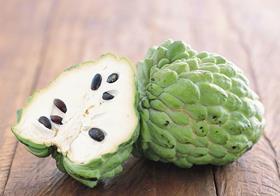
Canada is a long way from the equator, but that doesn’t mean the country’s consumers don’t have access to the taste of the tropics. If one Taiwanese exporter has its way, more Canadians should be able to scoop into the tropical atemoya in the near future.
The atemoya, along with its parent the cherimoya, is also known in some regions as a ‘custard apple’ and originates in South America. The fruit has become particularly popular in Taiwan, which produces 55,000-60,000 tonnes a year between November and April, evenly divided between the two varieties.
Developments in post-harvest technology have allowed Taiwanese atemoya to reach the Canadian market, according to Dr William Chang of major Taiwanese grower-exporter Lytone Enterprise.
“It takes a lot of effort to grow on a commercial basis, but the result is very much worthwhile,” Chang explained. “Its stability is not very good, if not treated properly. We are probably the only company who can maintain its shelf life for over 24 days.”
Lytone, which began life as a food additive and post-harvest research company before moving into horticulture, has developed a suite of proprietary shelf life extension technology for various tropical fruits, which enable the company to ship atemoya across the Pacific.
“We hope to increase our share of the market in Canada, which should entertain more supplies of atemoya from Taiwan with our post-harvest preservation technology. We intend to ship them by ocean freight and educate the local supermarkets for proper promotion.”
Chang believed atemoya would be able to develop a good following in North America, beginning with the Asian immigrant population in Canada who may already be familiar with the fruit. Taiwanese atemoya does not have access to the US, however.
“The US has not allowed the fruit to be imported under any quarantine protocol, so consumers in the US will have to wait, or drive up north to find the fruit,” said Chang.



